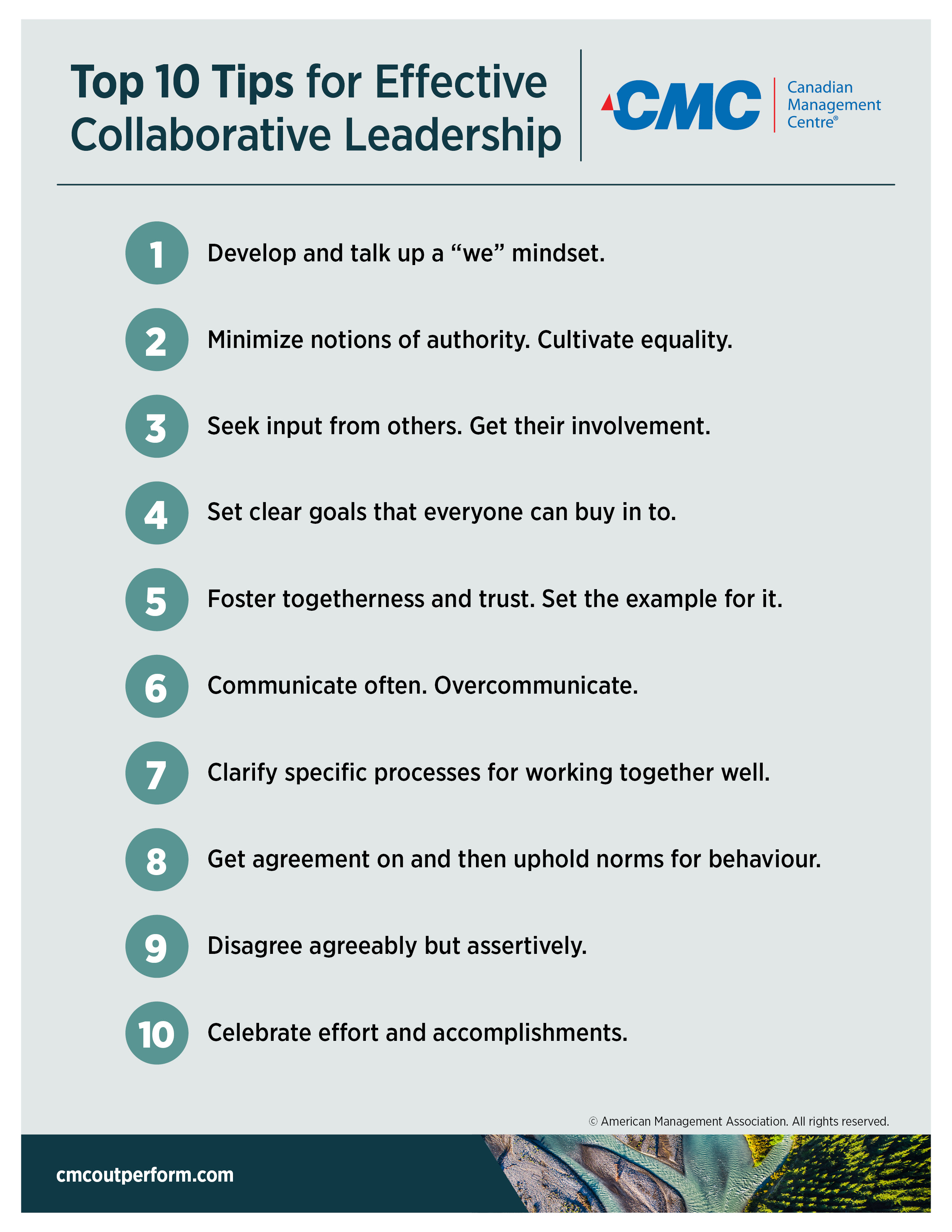Collaboration in the workplace used to be limited to in-person brainstorms and project coordination. But the way we work has changed. Especially how we work together. While there are many effective collaboration and communication strategies, the most successful work environments typically have some important features in common. They're places where employees feel seen, heard, and safe to share their thoughts. They run efficient meetings and work sessions. They have standardized systems and collaboration processes in place. Their teams understand the importance of healthy communication.
As a collaborative leader, you have to continuously adapt to the different needs and practices of your team. Don't expect people with different backgrounds to follow the same process—instead, recognize and support their unique styles. The more flexible your strategy to implement collaborative work is, the easier it will be on your team. Collaboration starts at the top, so make sure you're always inviting co-creation, encouraging open communication, and making time for your team to innovate and collaborate. Encourage team members to reach out to you if they have questions or schedule a 1:1 for some extra meeting time.
Effective collaboration is a process where you'll need to adjust and refine along the way - but it's worth it! Below are our top tips to help you lead more collaboratively and download the pdf to use as a reference in your next meeting.
- Develop and talk up a “we” mindset.
- Minimize notions of authority. Cultivate equality.
- Seek input from others. Get their involvement.
- Set clear goals that everyone can buy in to.
- Foster togetherness and trust. Set the example for it.
- Communicate often. Overcommunicate.
- Clarify specific processes for working together well.
- Get agreement on and then uphold norms for behaviour.
- Disagree agreeably but assertively.
- Celebrate effort and accomplishments.





